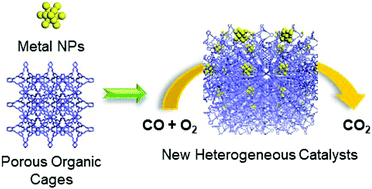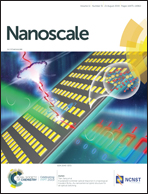Shape-persistent porous organic cage supported palladium nanoparticles as heterogeneous catalytic materials†
Abstract
Porous Organic Cages (POCs) are an emerging class of self-assembling, porous materials with novel properties. They offer a key advantage over other porous materials in permitting facile solution processing and re-assembly. The combination of POCs with metal nanoparticles (NPs) unlocks applications in the area of catalysis. In this context, POCs can function as both the template of ultra-small NPs and a porous, but reprocessable, heterogeneous catalyst support. Here, we demonstrate the synthesis of ultra-small Pd NPs with an imine linked POC known as ‘CC3’, and show that hydrogen gas can be used to form metallic NPs at ∼200 °C without the reduction of the organic cage (and the accompanying, unwanted loss of crystallinity). The resulting materials are characterized using a range of techniques (including powder diffraction, scanning transmission electron microscopy and synchrotron X-ray absorption spectroscopy) and shown to be recrystallizable following dissolution in organic solvent. Their catalytic efficacy is demonstrated using the widely studied carbon monoxide oxidation reaction. This demonstration paves the way for using ultra-small NPs synthesized with POCs as solution-processable, self-assembling porous catalytic materials.



 Please wait while we load your content...
Please wait while we load your content...